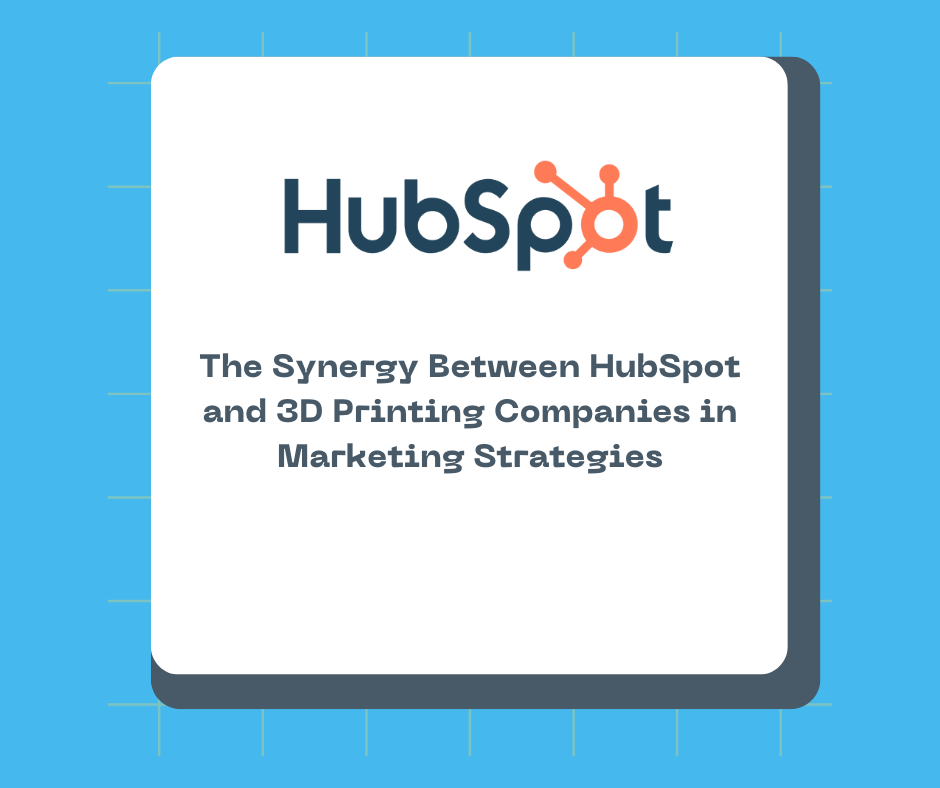In an era where customization and rapid innovation are key to capturing market share, 3D printing companies are finding a powerful ally in HubSpot. This collaboration represents a synergy between cutting-edge manufacturing technology and sophisticated digital marketing strategies. HubSpot, with its comprehensive suite of tools for inbound marketing, sales, and customer service, provides 3D printing companies with the resources they need to attract, engage, and delight customers. This article explores how the integration of HubSpot’s platform with the unique capabilities of 3D printing companies can revolutionize marketing strategies in this niche industry.
Understanding the Unique Marketing Needs of 3D Printing Companies
3D printing, or additive manufacturing, offers unparalleled flexibility in production, enabling the creation of complex and customized products with shorter lead times. However, the innovative nature of 3D printing also presents unique marketing challenges. The target market is diverse, ranging from hobbyists and designers to engineers and large manufacturers. Furthermore, the technology’s novelty means that educational content is crucial for market penetration and growth.
HubSpot’s Inbound Marketing Approach
HubSpot’s inbound marketing methodology focuses on attracting customers through relevant and helpful content, adding value at every stage in the customer's journey. For 3D printing companies, this approach is particularly effective. It allows them to demonstrate their expertise, showcase the capabilities of their technology, and educate their market about the potential applications of 3D printing.
Strategies for Leveraging HubSpot in 3D Printing Marketing
1. Content Creation and Distribution
Content is king in inbound marketing, and this is especially true for 3D printing companies. HubSpot’s Content Management System (CMS) enables the creation of blog posts, whitepapers, case studies, and videos that highlight the benefits and applications of 3D printing technology. By leveraging HubSpot’s SEO tools, these companies can ensure their content reaches the right audience, driving organic traffic to their site.
2. Lead Generation and Nurturing
With its powerful CRM and marketing automation tools, HubSpot allows 3D printing companies to capture leads through forms and landing pages, segment them based on interests and behaviors, and nurture them with targeted email campaigns. This process is crucial for educating potential customers, moving them through the sales funnel, and ultimately converting them into loyal customers.
3. Social Media Integration
Social media platforms are vital for showcasing the visual and innovative aspects of 3D printing. HubSpot’s social media tools enable companies to schedule posts, monitor interactions, and analyze the performance of their content across different platforms. This not only increases brand awareness but also engages the community in meaningful conversations about the potential of 3D printing.
4. Customer Relationship Management
HubSpot’s CRM is central to managing customer interactions and data. For 3D printing companies, this means having a 360-degree view of customer activities, from initial contact to post-purchase feedback. Such insights enable personalized communication and offers, enhancing customer satisfaction and loyalty.
5. Analytics and Reporting
Understanding the effectiveness of marketing strategies is essential for continuous improvement. HubSpot provides comprehensive analytics and reporting tools that allow 3D printing companies to measure the performance of their marketing activities, identify trends, and make data-driven decisions to optimize their strategies.
Case Studies: Success Stories of 3D Printing Companies with HubSpot
Several 3D printing companies have successfully harnessed the power of HubSpot to drive growth and engagement. For instance, a company specializing in custom 3D-printed medical devices used HubSpot to create an educational blog series that attracted a significant following among medical professionals, leading to increased inquiries and sales. Another example is a 3D printing service provider that leveraged HubSpot’s email marketing tools to nurture leads with personalized content, resulting in a 50% increase in conversion rates.
Best Practices for Integrating HubSpot into 3D Printing Marketing
- Develop Comprehensive Buyer Personas: Understanding the diverse needs and interests of your target audience is crucial. Tailor your content and communication strategies to meet these specific needs.
- Invest in Quality Content: High-quality, informative content that demonstrates the value and possibilities of 3D printing can attract and engage a wide audience.
- Leverage Visuals: Utilize HubSpot’s capabilities to share visual content, such as infographics, videos, and images of 3D-printed products, to highlight the innovative nature of your services.
- Focus on Education: Given the relatively new and complex nature of 3D printing technology, educational content should form the backbone of your marketing strategy.
- Monitor and Adapt: Use HubSpot’s analytics tools to continuously monitor the effectiveness of your strategies and adapt based on real-time data.
Conclusion
The synergy between HubSpot and 3D printing companies represents a convergence of innovation in both product creation and marketing strategies. By leveraging HubSpot’s comprehensive suite of tools, 3D printing companies can effectively address their unique marketing challenges, engaging and educating a diverse audience about the potential of this transformative technology. Through targeted content creation, lead nurturing, and data-driven decision-making, these companies can not only capture but also maintain a competitive edge in the rapidly evolving market. The future of marketing in the 3D printing industry lies in the strategic integration of advanced manufacturing technologies with sophisticated digital marketing platforms, and HubSpot is at the forefront of this revolution.
Schedule your training session here and comment “Need Training” on the request form.

Comments